

Table of contents
- Do greenhouse cucumbers also have yellow leaves?
- What causes yellow leaves?
- nutrient deficiency
- dryness
- fungal infections
- Can the cucumber plant be saved?
- leaf spot disease
- cucumber mosaic virus
- aphids
- spider mites
- draft
- How can I prevent yellow leaves?
When the first yellow leaves appear on your cucumber plants, you should immediately start looking for the cause. This can be harmless but also a serious infection or a pest infestation. If you react too late, your plant may no longer be salvageable and the hoped-for and desired harvest will not come about.
Do greenhouse cucumbers also have yellow leaves?
Your cucumbers can also develop yellow leaves in the greenhouse. The causes are similar to outdoor cucumbers. However, the room climate or care errors are particularly common reasons. Too dry air and/or drafts easily lead to an infestation with spider mites. Make sure that the humidity is sufficiently high and that air circulation is constant. When watering, avoid waterlogging and do not plant your cucumbers too close together.
Tip:
Do not plant cucumbers in the same greenhouse with tomatoes. The two plant species prefer opposite climates and cannot thrive well together.
What causes yellow leaves?
- nutrient deficiency
- dryness
- Fungal infections (cucumber wilt, Verticillium wilt, powdery and downy mildew)
- leaf spot disease
- cucumber mosaic virus
- aphids
- spider mites
- draft
nutrient deficiency
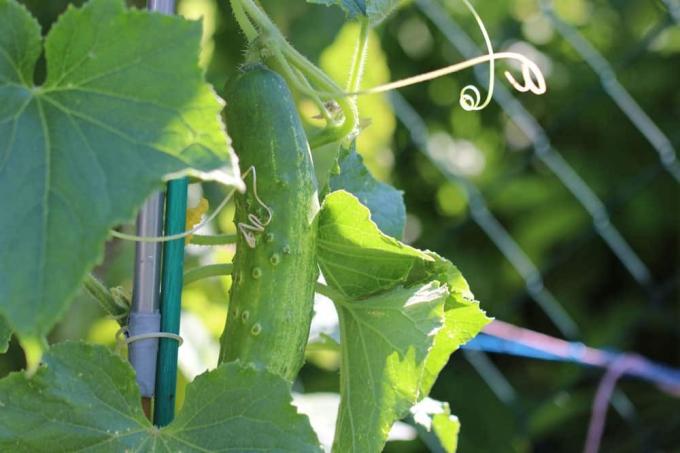
Cucumbers are among the so-called heavy feeders. These are vegetables that have a very high nutrient requirement. It is best to add a good portion of mature compost or rotted cattle or horse manure to the soil when planting. For a faster effect, you can mix the compost with horn shavings. Alternatively, use a good organic complete fertilizer or a special cucumber fertilizer according to the manufacturer's instructions. A second fertilization in July is recommended unless you have given slow-release fertilizer.
dryness
For good growth and juicy fruits, your cucumber plants not only need plenty of nutrients but also a lot of water. If this is missing, the cucumbers become slightly bitter. Water your plants regularly, preferably every morning. Use lukewarm stagnant rainwater for this. A layer of mulch keeps the soil moist and loose while keeping the fruit clean. Always water the root area and not the foliage.
fungal infections
Fungal infections tend to occur on cucumbers in the greenhouse. The most notable of these are cucumber wilt, Verticillium wilt, and powdery mildew and downy mildew. The course of the disease is rapidly progressive in the first two infections. Despite a good supply of water and nutrients, the plants are very limp and wilted. In the case of an infestation with powdery mildew, a whitish coating appears on the leaves before they turn yellow and fall off.
Can the cucumber plant be saved?
Unfortunately, if it is cucumber wilt or Verticullium wilt, you cannot save your cucumber plants. Remove the infested plants immediately and dispose of them in household waste or by burning, never on the compost. This is because the pathogens can survive there and later spread to other plants. Other infections are entirely treatable if caught early. A proven home remedy for fungal diseases is skimmed milk. Mix the milk with water in a ratio of 1:3 and spray it on your cucumber plants daily. Prepare the mixture fresh every day. After about a week you should see success and the fungi should have died. In contrast to the use of chemical agents, the cucumbers treated with skimmed milk can be eaten at any time.
leaf spot disease
Leaf spot disease affects various types of vegetables and can be transmitted to other plants. In the early stages, this bacterial infection only shows yellowish spots on the upper side of the leaves. Only later do the leaves turn yellow, then brown. If the plant is injured, the bacteria get inside, they can also hibernate in the soil. When the humidity is high, the risk of an infestation is particularly high.
cucumber mosaic virus

In the case of an infestation with the cucumber mosaic virus, the older leaves in particular turn yellow, young leaves tend to get yellow spots. The fruits are also affected, they deform and can no longer be sold. However, the virus cannot be transmitted to humans. Dispose of the infested plants and the fruits of the neighboring plants. Before you replant the site with cucumbers, you should change the soil. Transmission of the infection is also possible with garden tools or aphids.
aphids
Aphids are more likely to occur in outdoor cucumbers and only rarely in the greenhouse. The leaves of your cucumbers stun when infested and get a sticky coating called honeydew. The leaves then turn yellow and fall off. Neem oil and spraying the affected plants with a mixture of milk and water are suitable for treatment (ratio 1:2) or the use of beneficial insects, which you can find in any well-stocked garden store receive.
spider mites
Spider mites prefer to appear in greenhouses. The animals are so small that they can hardly be seen with the naked eye. You can recognize the infestation by the fine web that usually sits on the leaf axils and edges or by small light spots on the cucumber leaves. Later, the affected leaves develop brown leaves and increasingly turn yellow. If you don't react quickly enough, your cucumber plant will become bare and die. A chemical treatment is not necessary. Home remedies like neem oil, showering with a hard jet of water, or wrapping individual plants in plastic wrap can also help. The use of beneficial insects is also very effective.
draft
Drafts occur mainly in the greenhouse, where they cause the leaves of your cucumbers to turn yellow. Therefore, ensure constant air circulation without draught. Close the ventilation (windows, door) in the evening and open it in the morning when it is no longer so cold but not yet too warm. Outdoor cucumbers are best planted in a sheltered location.
How can I prevent yellow leaves?
The best prevention is choosing the right location for your cucumber plants and proper care. Cucumbers like it warm, airy and moist. However, you should avoid wet, draughty or windy conditions. The soil should be permeable, not too heavy and at least 10 °C warm. Water the plants regularly but not too much and fertilize as directed. Too much fertilizer can also harm your cucumber plants.
 Home editorial office
Home editorial office
Learn more about plant diseases
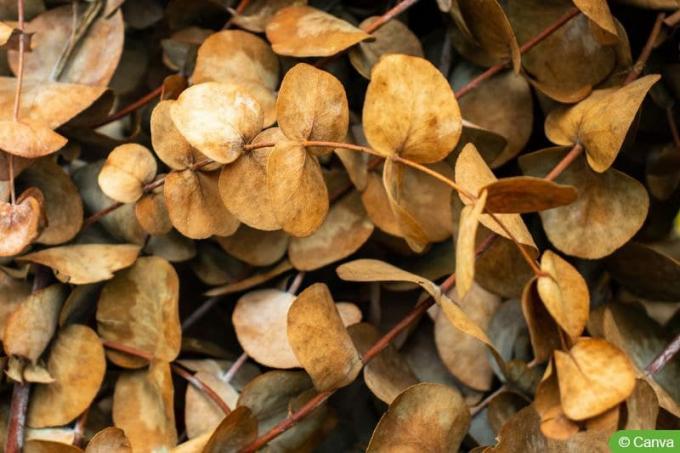
Eucalyptus gets brown/yellow leaves
The eucalyptus is becoming more and more of a trend plant. With its blue-green leaves, the eucalyptus sets beautiful accents. Occasionally, however, foliage discoloration may occur. Everything about the causes and remedial measures below.

Small white dots on leaves: what to do?
When white dots appear on the leaves of crops, take a closer look as they can indicate problems. This text explains what causes can be responsible for this and what you can do about the stains.
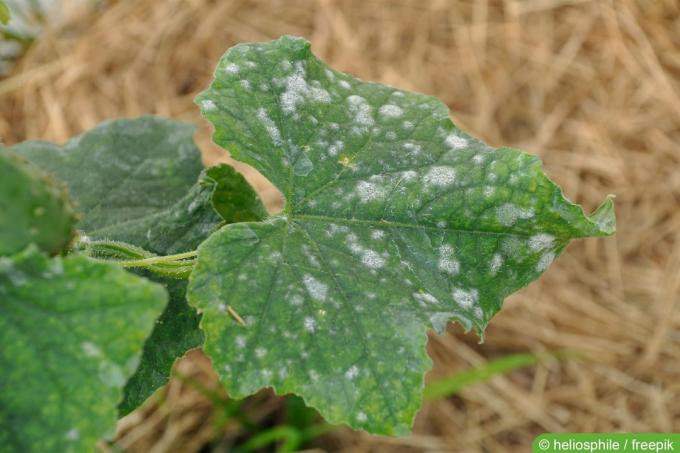
Powdery mildew on cucumbers: how to get rid of it
The powdery mildew often stops by the cucumber bed and quickly conquers the entire plant. That is why every gardener must recognize it early and fight it properly. This is the only way to save the cucumber harvest.

Fighting frizz | 9 home remedies
Peaches from your own garden taste wonderful. More and more hobby gardeners are trying to grow the tasty fruits themselves. The joy is clouded by the appearance of leaf curl in spring. What is this disease? How can you prevent or fight them?
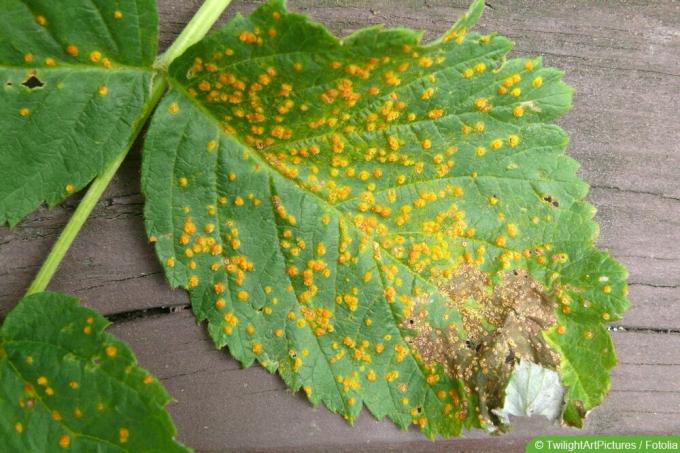
Fighting rust on plants biologically | 5 home remedies
Leaf or plant rust is caused by fungi and can affect ornamental plants as well as crops. Most species of fungi are specialized to a single host or host family and are transmitted by wind. The infestation rate increases significantly with moisture.
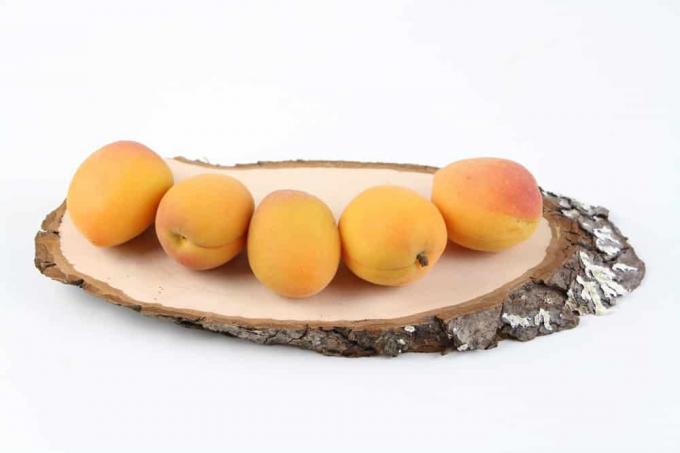
10 typical diseases of the apricot tree and apricot tree
Apricots are one of the most popular fruits in Germany. It becomes difficult to care for an apricot tree in such a way that it is not attacked by a disease. Apricots are known for their susceptibility to diseases and it is therefore important to be able to distinguish between the individual diseases.
